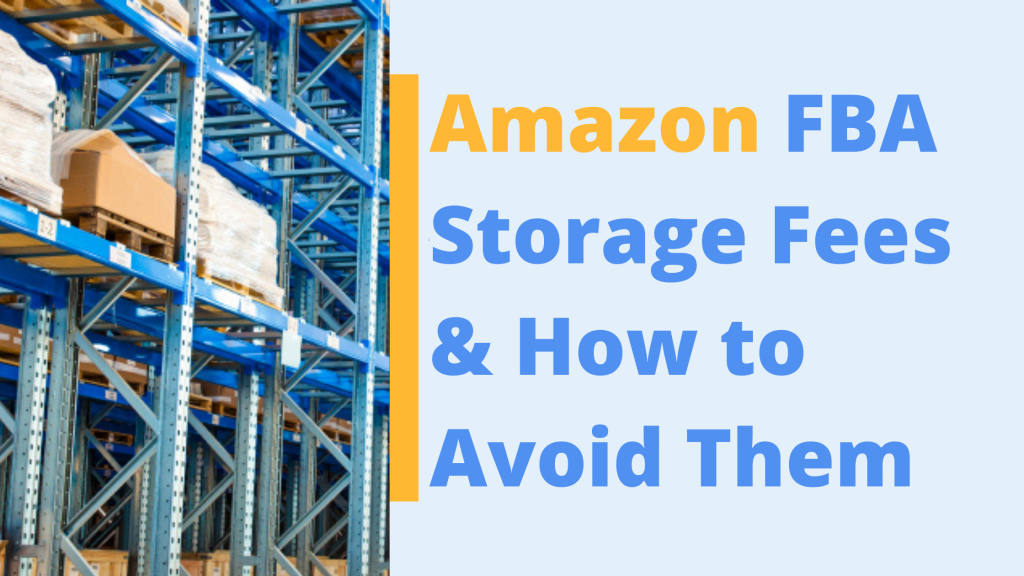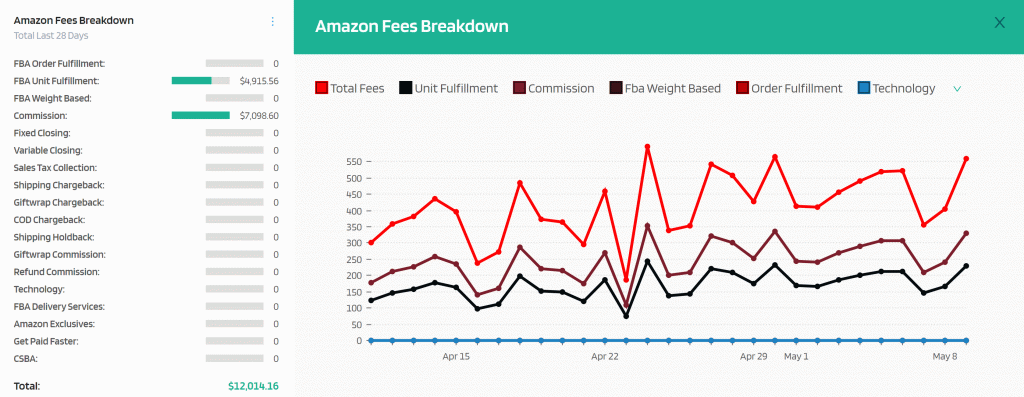
Selling and moving products quickly through your Amazon store won’t just make you money, it can save you some as well! No one wants to stock products that don’t sell and this is especially true if you are using Fulfilled by Amazon (FBA) to ship your products. This program has incredible benefits but it can also bring extra fees. Enter Amazon FBA storage fees.
Every year, on the 15th of February and the 15th of August, Amazon conducts an inventory clean up which means if you have more than one product just sitting in their warehouses for a lengthy period of time, you will be charged long term storage fees.
Items that have been in the warehouse for 6-12 months are charged $11.25 per cubic foot while items that have been in the warehouse for over 12 months are charged $22.50 per cubic foot. The longer those items sit there, the higher the cost to you.
There is a way to check on your long-term inventory and calculate the fees you may be facing. In Seller Central, go to the Inventory tab and click Manage Inventory. Check the Inventory Dashboard. Scroll down to the FBA Inventory Age box then click on View Details. Here you will see the inventory age for each product, how many units have been there for both 6 and 12 months, and the estimated long term storage fees (LTSF) for each product.
Luckily, there are many things you can do to get around these storage charges or at the very least, reduce their impact on your bottom line.
How to Avoid FBA Long-Term Storage Fees
1) Have a Flash Sale
One of the most effective ways to move product is to have a sale! Having sales anytime between August and February will help you avoid the 6 month fees on the February 15th deadline but it is important that you keep your profit margins in mind. You need to discount products enough to move them but not so far that you lose money. You have a few options here depending on what you are selling.
If appropriate, you can run a “Back to School” sale or get in on the shopping frenzy that happens before the holidays in December. People are looking to buy certain things in these seasons and if you discount to keep pace with, or beat, your competitors, you should be able to move lots of your inventory. If you still have items that haven’t moved come January, it’s time for a flash sale. Create a custom audience or Lookalike campaign on Facebook using your Amazon customer report data, use landing pages for your website and social media pages that direct people to your product and your sale.
When doing this, you have to make some careful considerations. When it comes to large products, for example, you might want to offer larger discounts. LTSF are calculated by time AND cubic feet. The bigger the item, the more important it is to move it.
2) Time Your Restock Right
Because you know that Amazon is going to hit you with LTSF twice a year, you can time your restocks to try and keep your inventory under the six month marker. If you wait until after the February and August deadline pass to restock your items, if they don’t sell, they will have been in the warehouse for less than 6 months when the next deadline comes and you will not have to pay on them.
3) Create Awareness
The greatest and most useful product in the world will collect dust in a warehouse if the right buyers do not know it is there. In other words, you can’t sell a product if people do not know you are selling the product. Make your presence known.
Create ads and relevant posts on your social media channels and create content for your website. You can design product specific landing pages that help drive traffic to your Amazon listing. Write blog posts that act as an education piece around your product.
Film a video, showing all the ways your product can be used. Obviously what you do to attract customers will depend on your product but the more of it you do, the more likely you are to convert sales. And converting sales means you products aren’t in the warehouse long enough to rack up storage fees.
4) Get Rid of It
If the methods mentioned above don’t clear your inventory, you can always have it shipped back to you. Of course, like most things in life, these shipments aren’t free. To return your inventory, Amazon charges you $.50 for a standard sized unit and $.60 for an oversized one. If you don’t want these products or you don’t have the space to store them yourself, Amazon will get rid of them for you, again, at a cost. For Amazon to remove the item, it will cost $.15 for a standard unit and $.30 for an oversized one.
Sit down and crunch all the numbers. You will need to decide if it is more cost effective for you to keep the items where they are and pay the fees or to move them on out.
The one good thing about Amazon’s LTSF is that you know when they are coming so you can plan for them. Amazon will send you an email in January and July to let you know that you are likely to owe them storage fees. This gives you ample opportunity to get creative and move that merchandise!
Gain Total Insights Into Amazon FBA Storage Fees

A complete tool into all your Amazon storage fees can make it easier to assess how profitable your eCommerce business is.
Keeping track of every single storage fee can be quite overwhelming. It can also be difficult to keep track of how all of these fees affect your bottom line, especially during busy seasons. This is where a great profit and loss tool can come into play.
FeedbackWhiz’s Profits and Accounting Tool breaks down all of your Amazon seller fees, costs, and sales into attractive, easy-to-read and understand charts and graphs. By analyzing your most profitable and least profitable products, you can get a better idea of how fees are affecting your profits and make adjustments where necessary to try and lower Amazon seller fees.
Looking to avoid storage charges yourself? Why not get started with a free tool! Sign up today for a free 30 day trial and and try out FeedbackWhiz’s Profits and Accounting tool. Get started by clicking here.
*Editor’s Note: This article on Amazon FBA storage fees was originally published on February 1, 2018. It was updated on August 25, 2021.

1 Comment
William White
You shared significant steps to avoid high-cost storage services. Here, I discovered many simple and effective ways that everyone can do to avoid high-cost Amazon FBA sellers' storage fees. I had a very stressful situation five months ago. I changed my Amazon FBA seller and found a low-cost storage fee for Amazon FBA services. Now I am making more profit than earlier. Great Blog.